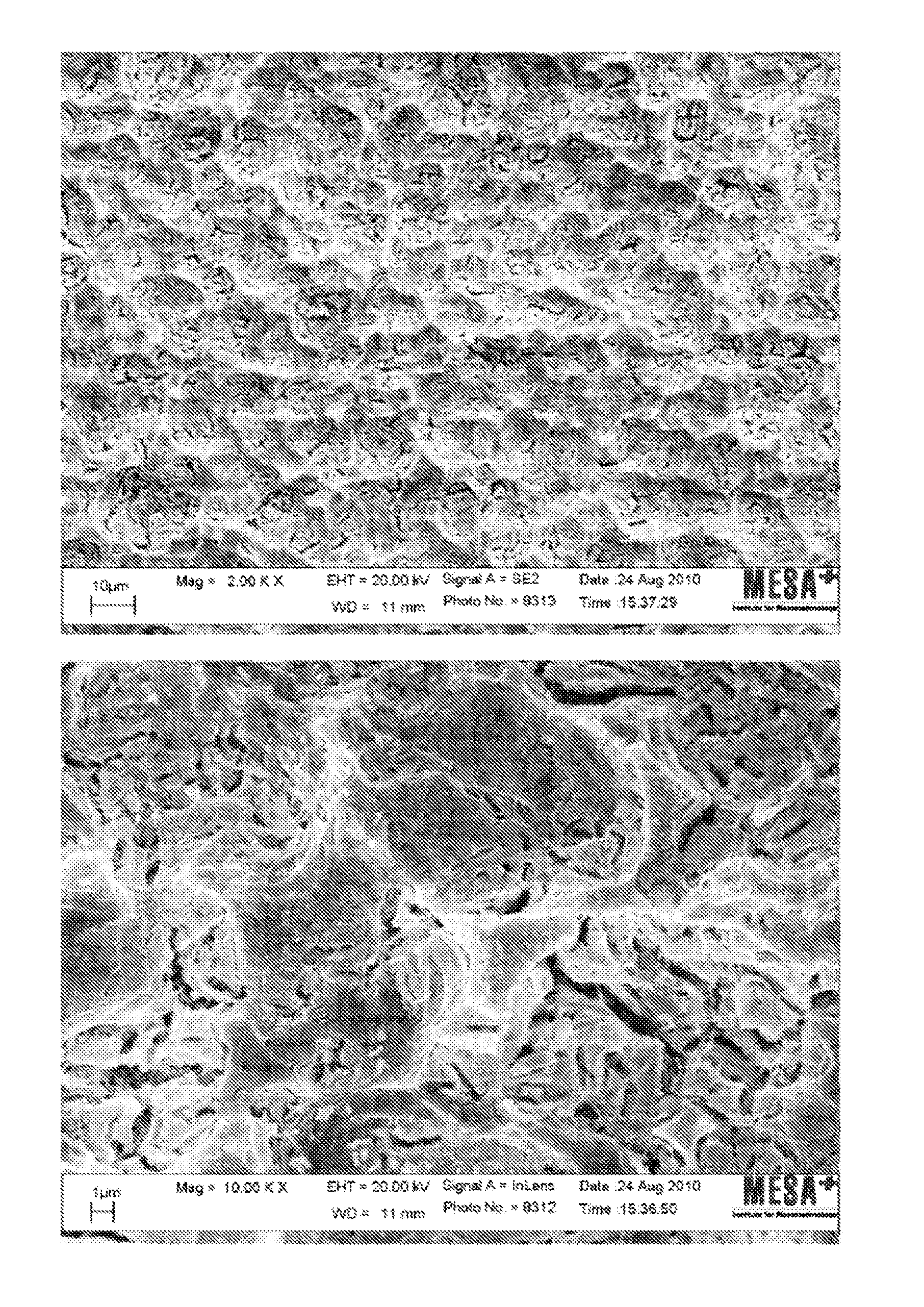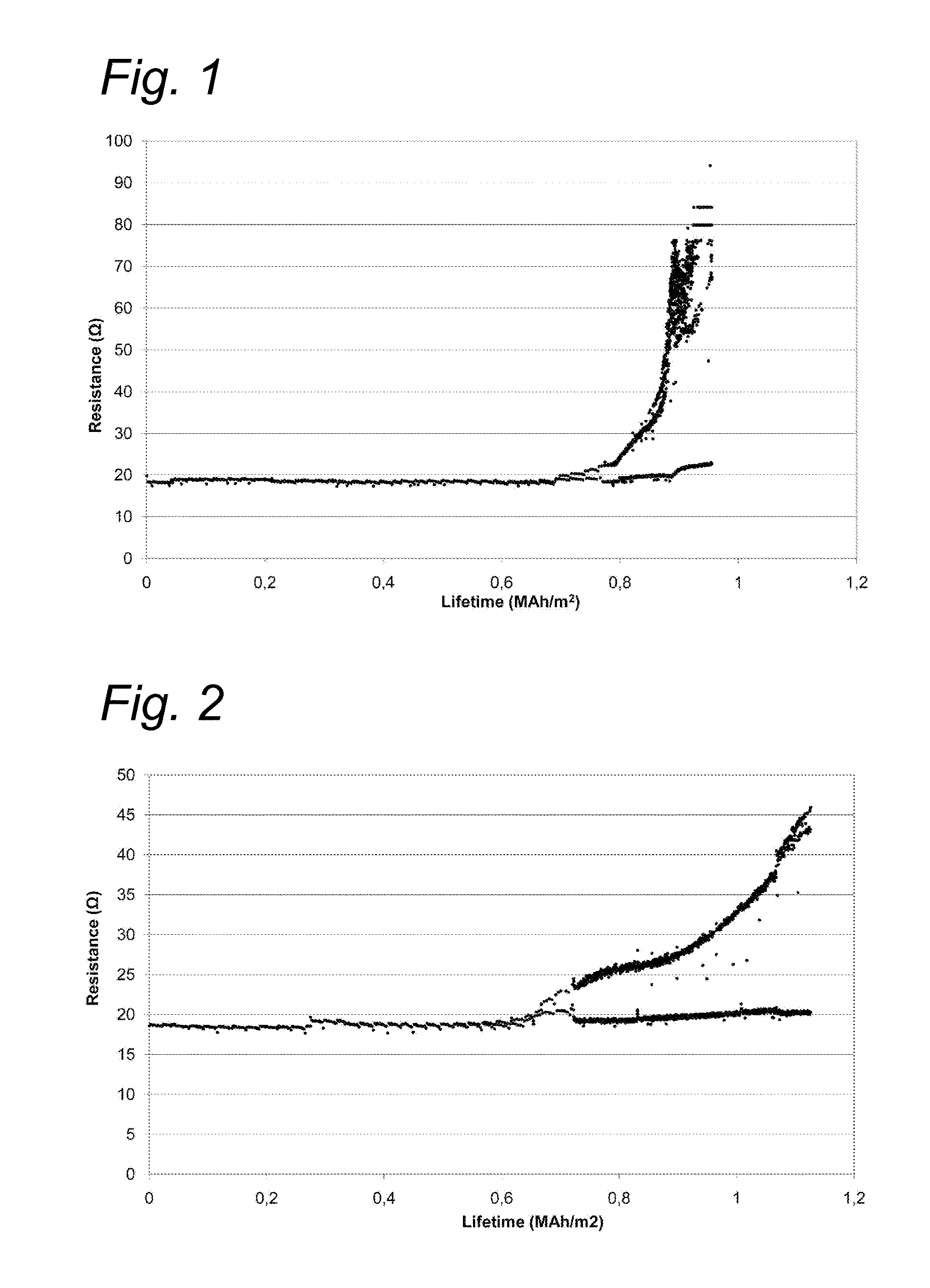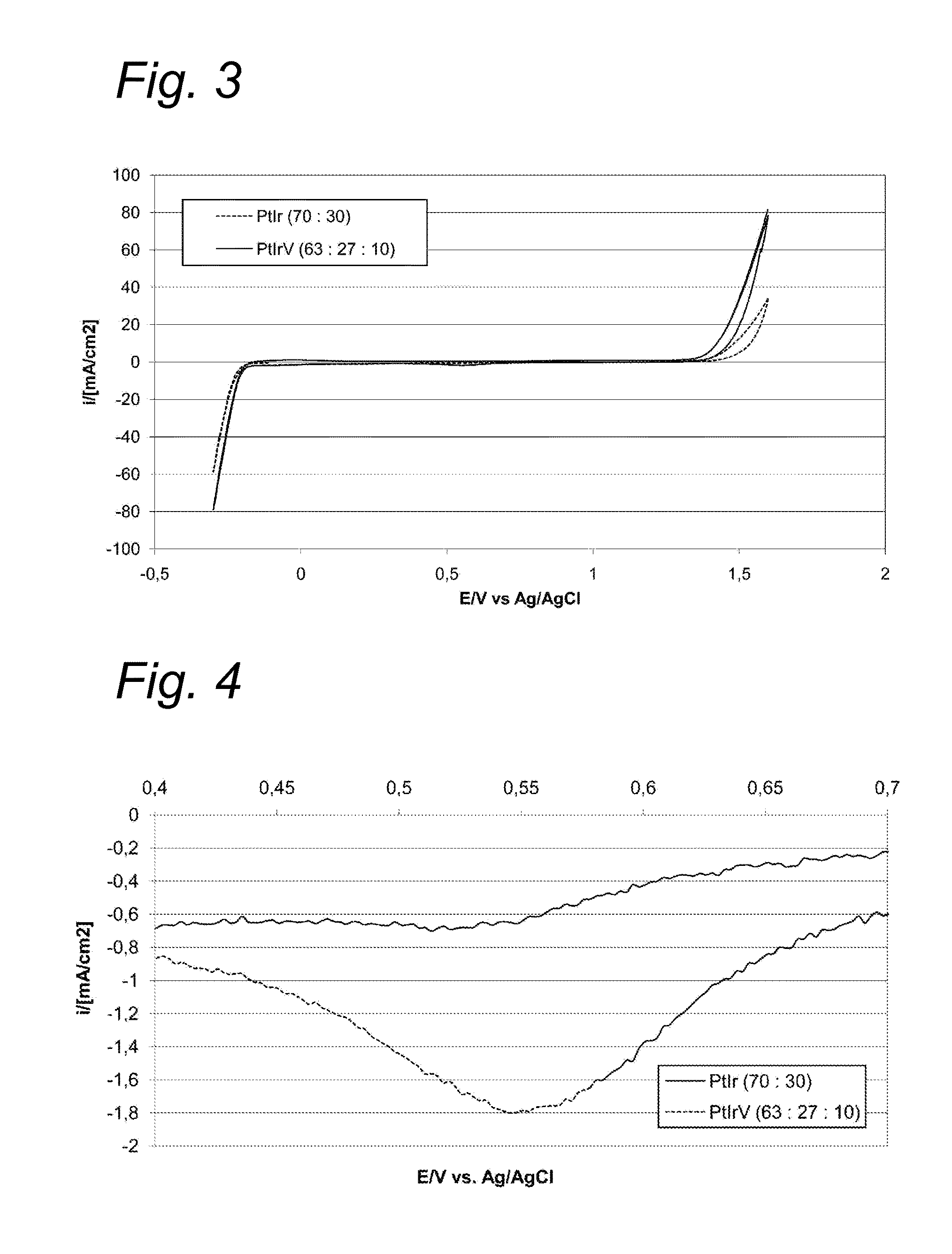Electro-catalyst
a technology of electrocatalysts and catalysts, applied in the field of electrocatalysts, can solve the problems of slow kinetics, cumbersome anodic oxidation of these types of fuels, and slow kinetics, and achieve the effect of stable operation and prolonged li
- Summary
- Abstract
- Description
- Claims
- Application Information
AI Technical Summary
Benefits of technology
Problems solved by technology
Method used
Image
Examples
example 1
[0047]The catalysts were prepared by the general methods disclosed in U.S. Pat. No. 4.528.084 and U.S. Pat. No. 4,797,182. According to these general methods, a support for the catalyst is degreased and etched with a diluted acid. Subsequently, a paint comprising the required metal salts or oxides is applied. The support is dried and heated in air at about 500° C. If desired several layers of paint can be applied which are subsequently dried and heated.
[0048]A PtIr (70:30) catalyst was prepared as follows. A titanium sheet (160×30×1 mm) was degreased and etched (20% HCl, 90° C.) and then rinsed with deionised water. An aqueous solution of H2PtCl6 and IrCl3 was applied by coating. The coating thickness was 5 g / m2. The titanium sheet was then dried and heated at about 500° C.
[0049]A TaIr catalyst was prepared as follows. A titanium sheet (160×30×1 mm) was degreased and etched (20% HCl, 90° C.) and then rinsed with deionised water. An organic solution of butanol with of Ta(V) ethoxide ...
example 2
[0051]Cyclic voltammetry measurements were performed on catalyst compositions under the following conditions:
[0052]Electrolyte: H2SO4 (25% w / w)
[0053]Potential: −300 / 1600 mV
[0054]Scanning speed: 5 mV / s
[0055]Temperature: 25° C. (in oven)
[0056]Reference electrode: Ag / AgCl
[0057]Air flow through electrolyte: yes
[0058]The catalyst compositions (on Ti support) and the results are shown in Table 1.
TABLE 1CatalystCatalystORROERwt %mol %ImaxImax (A / m2) at +1600 mVMPtIrMPtIrM(A / m2)vs. Ag / AgCl—7030070300−0.929V76213702010−1.652V632710492130−4.4127In562420492130−4.466Ni76213702010−0.911Co76213702010−0.919
example 3
[0059]In a life-cycle test, a Pt—Ir catalyst (70:30 weight ratio) and a Pt—Ir—V catalyst (69:29:2 weight ratio), both on a Ti support, were compared at a current density of 2500 A / m2 alternatively as anode and cathode (polarity switch every five minutes). Test was conducted at 50° C. in 1 mol / l Na2SO4.
[0060]The Pt—Ir—V catalyst had a higher activity in the HER, HOR, ORR and OER than the Pt—Ir catalyst (life-cycle time for Pt—Ir—V was 1.06 MAh / m2=102.3 kAh / g.m2); life-cycle time for Pt—Ir was 0.86 MAh / m2=80.7 kAh / g.m2). The results are shown in FIGS. 1 and 2. Hence, the life-cycle for Pt—Ir—V is increased with about 27% relative to Pt—Ir (102.3 / 80.7=1.27).
PUM
| Property | Measurement | Unit |
|---|---|---|
| current density | aaaaa | aaaaa |
| molar ratio | aaaaa | aaaaa |
| Periodic System | aaaaa | aaaaa |
Abstract
Description
Claims
Application Information
 Login to View More
Login to View More - R&D
- Intellectual Property
- Life Sciences
- Materials
- Tech Scout
- Unparalleled Data Quality
- Higher Quality Content
- 60% Fewer Hallucinations
Browse by: Latest US Patents, China's latest patents, Technical Efficacy Thesaurus, Application Domain, Technology Topic, Popular Technical Reports.
© 2025 PatSnap. All rights reserved.Legal|Privacy policy|Modern Slavery Act Transparency Statement|Sitemap|About US| Contact US: help@patsnap.com



